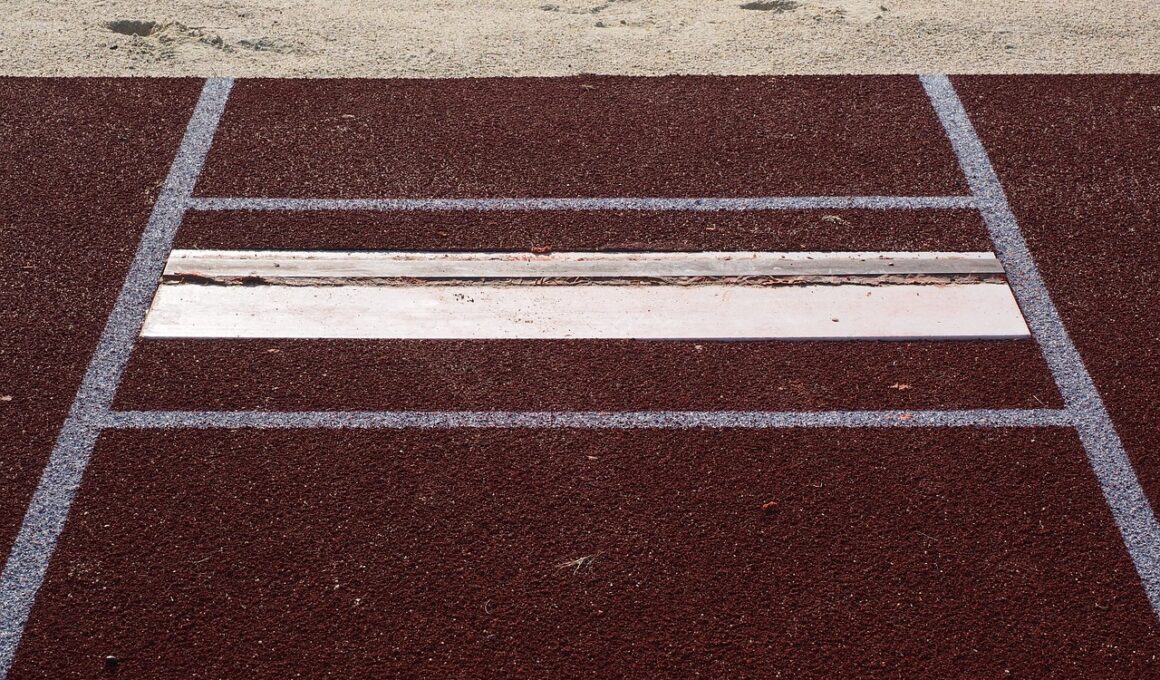Top 10 Long Jump Drills to Improve Youth Athletic Performance
The long jump is a complex athletic event that combines speed, technique, and power. Developing these skills for youth athletes is crucial for long-term success and enjoyment in the sport. In these paragraphs, we will explore the top 10 drills aimed at improving long jump performance. These drills focus on different aspects, including take-off, landing, and overall speed, providing a holistic approach to training. By incorporating these exercises into regular practice routines, coaches can enhance skills, build confidence, and support athletes in reaching their full potential. Athletes should always focus on technique over speed to prevent injuries and ensure proper form is maintained throughout each drill. Adopting this mindset will help ensure that the athletes can enjoy the process of improvement, rather than just focusing on results. Keep in mind that consistency is key when training young athletes. Gradually increasing the intensity and complexity of drills can help in maintaining engagement and encourage progression as confidence grows. Let’s dive into those drills that will help young athletes shine in their long jump endeavors.
One essential drill for young athletes is the “Standing Broad Jump.” This simple yet effective technique helps to develop explosive leg strength needed for long jump take-offs. To perform this drill, athletes start from a standing position and aim to jump as far forward as possible without using a running start. They should focus on using their legs to propel themselves forward and land softly to maintain control. Coaches should emphasize proper technique during this drill, as poor form can lead to potential injuries. Furthermore, repetitive practice will foster muscle memory, teaching athletes how to better utilize their leg strength when transitioning to longer jumps. Young athletes should aim for progressively longer distances while maintaining their form. This drill is also a great warm-up before more intensive training sessions, ensuring that the muscles are activated. Consider timing the athletes to add an element of competition and motivation. For-enhancing their experience, coaches can keep track of personal records, encouraging athletes to beat their own best attempts. Track their improvements, and provide positive feedback as they progress through this crucial drill.
Bounding Drill for Power Enhancement
The “Bounding Drill” is another excellent training exercise that focuses on developing explosive leg power, essential for successful long jumps. Athletes perform this drill by taking exaggerated strides while hopping or bounding along a designated distance. The goal is to push off the ground forcefully while utilizing a quick foot strike, showcasing both speed and power. Coaches can modify distances, increasing them as athletes grow more comfortable with their mechanics. It helps in building strength in leg muscles, enhancing their ability to generate force when taking off for the jump. Moreover, proper technique should be reiterated, as incorrect form can lead to diminished performance and potential injuries. Athletes should focus on maintaining a strong posture as they progress through this drill, ensuring they engage the core effectively during bounds. This drill is beneficial for building overall conditioning as well as improving coordination. It fosters competition amongst teammates, encouraging them to push each other during practice. Keeping sessions lively and enjoyable while practicing the Bounding Drill can make this training advantageous and engaging for young athletes.
Another fundamental exercise for youth long jump training is the “Approach Run Practice.” This drill allows athletes to focus on building speed before take-off, which is critical for maximizing jump distance. Athletes should practice running at top speed towards the take-off board, aiming to achieve consistency in their stride pattern. Emphasizing a strong start and maintaining proper form while gaining speed is essential for this exercise. Coaches should provide feedback on athletes’ acceleration and encourage them to maintain focus during their approach. Running mechanics are vital during this phase, as they significantly impact overall jump performance. Athletes can use markers on the track or field to help visualize optimal take-off points. As they get more comfortable, introduce variations such as incorporating hurdles or chin-ups to enhance athletic performance. Track times and distances to motivate athletes and celebrate personal bests. This drill ensures that the transition from running to jumping is seamless, improving their technique and overall jump distance over time. Eventually, athletes can increase their speed, leading to better exploitation of their power and skills on competition day.
Reverse Jumps to Enhance Landing Skills
Practicing the “Reverse Jump” is a fun and beneficial exercise for youth long jump athletes to improve landing skills. This drill involves athletes jumping backward onto a targeted area, emphasizing proper landing technique, which is often overlooked in regular training. By focusing on this aspect, athletes enhance their body awareness and learn to control their center of gravity effectively. Coaches can use various landing surfaces such as mats or designated target spots to teach athletes how to absorb impact during landing. Proper techniques include bending knees on landing and maintaining a balanced position without over-rotating or falling over. Repetitive practice allows athletes to become more confident in their landings, translating to better performance during competition jumps. Incorporating competitive elements like timing or distance covered while maintaining precise landing can engage their interest even more. Athletes can challenge themselves by varying the jump height and increasing the power behind their jumps. These improvements in landing skills will not only enhance their long jump capability but also contribute to overall athleticism and performance in other events.
Speed drills are critical in preparing youth athletes for successful long jump performances, and one effective drill is the “Flying 30s.” This exercise focuses on sprinting and maintaining top speed over a distance of 30 meters. Athletes begin with a short acceleration phase before hitting their top speed, allowing them to practice maintaining this velocity over a sustained distance. Coaches can set different starting points to encourage athletes to build endurance and strength throughout their runs. Athletes should concentrate on form, particularly maintaining an upright position, proper arm movement, and quick turnover of leg cycles. Repetition is key; athletes can work on both acceleration and top-speed phases, aiming for time improvements with every practice. This drill boosts overall speed and conditioning, which are vital factors in the long jump. Setting personal or team goals can also create a competitive atmosphere that promotes motivation and effort. Variations of the Flying 30s can add more excitement to training sessions and help prevent monotony. Track improvements and celebrate progress throughout the duration of training, ensuring athletes remember to enjoy the process all the while.
Technique Work for Form Refinement
Providing youth with opportunities to refine their long jump technique is key to enhancing their performance as athletes. Regularly scheduled “Technique Work” sessions should focus on fine-tuning aspects like approach speed, take-off angle, and body positioning in the air. It is crucial to break down each component, allowing athletes to understand the purpose of their movements and how they affect their jumps. Coaches can utilize video analysis or visual feedback on jumps to offer immediate guidance, helping young athletes to see areas that need improvement. Encourage athletes to practice both full jumps and drills focused on elements like take-off or mid-air mechanics. This targeted focus allows for significant development and improvements with practice. Additionally, emphasize the importance of posture in both pre-jump preparation and in the air, helping them maintain balance throughout the jump. Setting aside time for technique work is essential for athletes striving for success. Through effective communication and constructive feedback, young athletes will appreciate the finer details required for their growth, helping them prepare for eventual competition days.
Finally, a comprehensive and well-rounded training program incorporates various drills to enhance overall performance, allowing youth athletes to develop the necessary skills for long jump success. Consistent practice, properly structured exercises, and positive reinforcement will enable athletes to increase their confidence and abilities over time. In addition to physical drills, it’s important to foster a supportive environment that encourages teamwork and personal growth. As athletes work on these drills, coaches should celebrate the efforts and progress made, creating a culture of improvement rather than solely focusing on results. Providing opportunities for young athletes to experiment with different drills will foster creativity and a love for the sport. Engaging in friendly competition amongst teammates not only improves individual performance but also develops camaraderie and motivation in practices. This ultimately helps athletes become well-rounded jumpers while enjoying the training process. To further enhance results, coaches can maintain clear communication with the athletes, ensuring they express any concerns or feedback. All the elements of youth long jump training can contribute to creating a solid foundation in their athletic journey.


